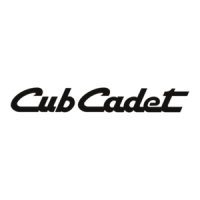· Another method for large dirt piles
is
to build a ramp
approach to the pile. See Figure 13.
Figure 13
It's important
to
keep the bucket level
when
approach-
ing a bank or pile. This will help prevent gouging in the
work area. See Figure 14.
Figure 14
PEELING AND SCRAPING
Use a slight bucket angle, travel forward,
and
hold the
lift
control forward
to
start the cut.
Make
a short, 5 inch
to 8 inch angle cut and break-out cleanly. See
Figure 15.
Figure
15
With the bucket level, start a
cut
at the notch
approximately 2 inches deep. Hold the depth by
feathering the bucket control to adjust the cutting lip
up
or down. When the front tires enter the notch,
adjust the lift cylinder to maintain proper depth. See
Figure 16.
8
Figure 1~
Make additional passes until the desired depth
is
reached. During each pass, . only use the bucket
control while
at
working
depth~
This will allow
you
to
concentrate
on
controlling the bucket angle to
maintain a precise cut. See Figure 17.
3RD
CUT
4TH
CUT.
ETC.
__
,...
___
,_
___
._,_
...
...,...,
___
J_
___
,_
..
~~----
w~Mz)z);,)004~
I ,
Figure
17
.
LOADING LOW
TRUCKS
OR
I
SPREADERS
FROM A PILE
For faster loading, minimize
~he
angle
of
tum and _
length of
run
between pile! and spreader. See
Figure 18. ·
Figure 18
Backgrade occasionally with a loaded bucket to keep
the working surface free of
rut~
and holes. Also, hold
the lift control forward so the full weight of the bucket
is scraping the ground. Use t~e heel of the bucket.
See Figure
19.
·
Figure 19
F-8297
(Rev.
2-94)

